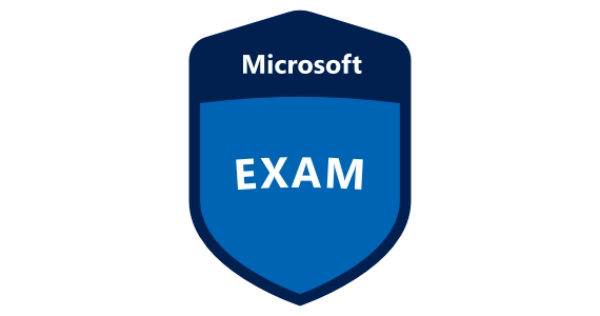
DP-600 Microsoft Fabric Engineer exam is now available
Table of Contents
New exam released: DP-600 Implementing Analytics Solutions Using Microsoft Fabric
The new exam to certify your skills in implementing analytics solutions using Microsoft Fabric is now available in beta. Here is a glance at the details at time of release. Note, that these details are subject to change over time, so always use the links in the useful links section to review the latest state.
Skills measured
The skills measured page gives you a breakdown of the skills measured in the exam. The percentages indicate the relative weight of each major topic area on the exam. The higher the percentage, the more questions you are likely to see on that content area on the exam.
- Plan, implement, and manage a solution for data analytics (10–15%)
- Prepare and serve data (40–45%)
- Implement and manage semantic models (20–25%)
- Explore and analyze data (20–25%)
Study Guide
Here is a full breakdown of the skills measured in the exam.
Plan, implement, and manage a solution for data analytics (10–15%)
- Plan a data analytics environment
- Identify requirements for a solution, including components, features, performance, and capacity stock-keeping units (SKUs)
- Recommend settings in the Fabric admin portal
- Choose a data gateway type
- Create a custom Power BI report theme
- Implement and manage a data analytics environment
- Implement workspace and item-level access controls for Fabric items
- Implement data sharing for workspaces, warehouses, and lakehouses
- Manage sensitivity labels in semantic models and lakehouses
- Configure Fabric-enabled workspace settings
- Manage Fabric capacity
- Manage the analytics development lifecycle
- Implement version control for a workspace
- Create and manage a Power BI Desktop project (.pbip)
- Plan and implement deployment solutions
- Perform impact analysis of downstream dependencies from lakehouses, data warehouses, dataflows, and semantic models
- Deploy and manage semantic models by using the XMLA endpoint
- Create and update reusable assets, including Power BI template (.pbit) files, Power BI data source (.pbids) files, and shared semantic models
Prepare and serve data (40–45%)
- Create objects in a lakehouse or warehouse
- Ingest data by using a data pipeline, dataflow, or notebook
- Create and manage shortcuts
- Implement file partitioning for analytics workloads in a lakehouse
- Create views, functions, and stored procedures
- Enrich data by adding new columns or tables
- Copy data
- Choose an appropriate method for copying data from a Fabric data source to a lakehouse or warehouse
- Copy data by using a data pipeline, dataflow, or notebook
- Add stored procedures, notebooks, and dataflows to a data pipeline
- Schedule data pipelines
- Schedule dataflows and notebooks
- Transform data
- Implement a data cleansing process
- Implement a star schema for a lakehouse or warehouse, including Type 1 and Type 2 slowly changing dimensions
- Implement bridge tables for a lakehouse or a warehouse
- Denormalize data
- Aggregate or de-aggregate data
- Merge or join data
- Identify and resolve duplicate data, missing data, or null values
- Convert data types by using SQL or PySpark
- Filter data
- Optimize performance
- Identify and resolve data loading performance bottlenecks in dataflows, notebooks, and SQL queries
- Implement performance improvements in dataflows, notebooks, and SQL queries
- Identify and resolve issues with Delta table file sizes
Implement and manage semantic models (20–25%)
- Design and build semantic models
- Choose a storage mode, including Direct Lake
- Identify use cases for DAX Studio and Tabular Editor 2
- Implement a star schema for a semantic model
- Implement relationships, such as bridge tables and many-to-many relationships
- Write calculations that use DAX variables and functions, such as iterators, table filtering, windowing, and information functions
- Implement calculation groups, dynamic strings, and field parameters
- Design and build a large format dataset
- Design and build composite models that include aggregations
- Implement dynamic row-level security and object-level security
- Validate row-level security and object-level security
- Optimize enterprise-scale semantic models
- Implement performance improvements in queries and report visuals
- Improve DAX performance by using DAX Studio
- Optimize a semantic model by using Tabular Editor 2
- Implement incremental refresh
Explore and analyze data (20–25%)
- Perform exploratory analytics
- Implement descriptive and diagnostic analytics
- Integrate prescriptive and predictive analytics into a visual or report
- Profile data
- Query data by using SQL
- Query a lakehouse in Fabric by using SQL queries or the visual query editor
- Query a warehouse in Fabric by using SQL queries or the visual query editor
- Connect to and query datasets by using the XMLA endpoint
Role profile
Taken from the certification details, here is a breakdown of the role profile for the Fabric Analytics Engineer Associate certification…
As a candidate for this certification, you should have subject matter expertise in designing, creating, and deploying enterprise-scale data analytics solutions. Your responsibilities for this role include transforming data into reusable analytics assets by using Microsoft Fabric components, such as:
- Lakehouses
- Data warehouses
- Notebooks
- Dataflows
- Data pipelines
- Semantic models
- Reports
You implement analytics best practices in Fabric, including version control and deployment. To implement solutions as a Fabric analytics engineer, you partner with other roles, such as:
- Solution architects
- Data engineers
- Data scientists
- AI engineers
- Database administrators
- Power BI data analysts
In addition to in-depth work with the Fabric platform, you need experience with:
- Data modeling
- Data transformation
- Git-based source control
- Exploratory analytics
- Languages, including Structured Query Language (SQL), Data Analysis Expressions (DAX), and PySpark
How to prepare for the exam
Self learning material includes the following:
- The official learning path which I have curated into a collection.
- The extended Fabric learn modules
- You can work through the Fabric exercises which are a great way to get hands on with Fabric.
- Finally, if you want to go into more depth, you could review the Microsoft Fabric documentation.
Because the exam is currently in beta there are no practice tests available yet and learning material is limited.
If you learning preference isn’t reading, you could look at the Microsoft Fabric Learning Together initiative. This initiative is a series of live events that will run through the learning material and by completing the course will make you eligible for a 50% discount voucher for the exam!
Useful links

#mtfbwy